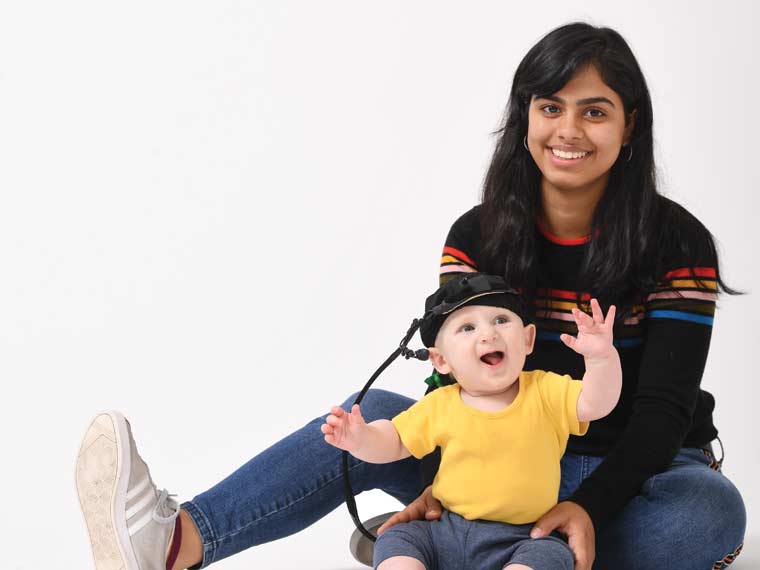Oh, Baby!
Can babies raised in diverse environments more easily recognize those around them?

Mahham Fayyaz ’19 is looking for a few good babies. More than a few, in fact. Since her first year at Sarah Lawrence, Fayyaz has worked in the Infant Development and Environmental Analysis (IDEA) Lab. Now, for a postgraduate research project on infant facial recognition, she needs 50 babies under 12 months old. So Fayyaz has been scouring playgrounds and pediatricians’ offices, toting recruitment flyers in hand. It’s hard work. “I’ve definitely annoyed a lot of mothers,” she jokes.
Fayyaz’s study builds on the work of her mentor, Kim Ferguson (psychology), dean of graduate and professional studies. Ferguson has analyzed the ability of babies to recognize people of other races: Her 2009 study, of both white and black babies, concluded that 4-month-old infants do so better than 8-month-olds. It’s one of several studies in research psychology to document the “other race effect,” which holds that people of all ages are less able to recognize people of races other than their own.
“At 4 months of age, you’re still learning how to see things and observing your environment,” Fayyaz says. “By 8 months, you’ve narrowed it down to what you usually see and are familiar with.”
“It’s not something that’s innate. It’s a learned behavior. It’s definitely our environment that shapes who we are.”
Fayyaz was among the first students to participate in the Psychology Summer Research & Internship Program, a paid internship, as a member of the IDEA Lab. What makes Fayyaz an effective researcher, Ferguson says, is her ability to grasp the theoretical framework of an experiment and still attend to the many details required to execute it. “She’s also really good at reviewing the literature and seeing where there are gaps,” Ferguson says.
One gap Fayyaz spotted inspired her study: Too much research was based on homogeneous infants from homogeneous neighborhoods. So Fayyaz made her project more expansive. Her study includes babies of any race or ethnic group, who live anywhere in the New York City area. She wants to determine whether babies raised in a multiracial environment will be more adept at identifying people of other races.
Fayyaz’s project reflects her own experience growing up in the Bronx as a South Asian—her parents had emigrated from Pakistan—and attending a diverse high school in East Harlem. When she arrived at Sarah Lawrence, she says, “It was a bit of a culture shock.”
In her research project, Fayyaz fits the babies with high-tech headgear that tracks their eye movements as they look at photos of different faces. Fayyaz says the “other race effect” can have serious ramifications, such as in erroneous eyewitness identifications in court proceedings. So she’s trying to demonstrate that the effect is avoidable, and that babies living in a diverse environment can grow up truly seeing the people around them.
“It’s not something that’s innate,” she says. “It’s a learned behavior. It’s definitely our environment that shapes who we are.”
Written by Martha T. Moore
Photo by Chris Taggart
